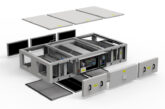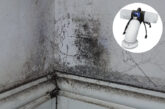
Christian Rehn, National Project & Design Manager at National Ventilation, gives us his top ten tips on getting whole house ventilation system design right.
A whole house ventilation system has many benefits for modern airtight homes with Mechanical Ventilation with Heat Recovery (MVHR) increasingly the ventilation system of choice for new build projects. It combats condensation and mould by reducing humidity, filters out pollen and pollutants from outside air and introduces clean tempered air, improving indoor air quality (IAQ) and making the home a healthier place to live.
For installers wanting to offer these benefits to their customers, where should they start?
INVOLVE A VENTILATION DESIGNER EARLY ON
When installing a whole house ventilation system good design is vital. This ensures the system provides the correct levels of ventilation and will physically work within the structure. Free design services, such as the one offered by National Ventilation, supply a full design, kit list and recommended duct routes – whilst ensuring Building Regulations compliance.
SELECT THE CORRECT MVHR UNIT
The ventilation designer will use architect drawings and property details to enter this data into an airflow calculator. This ensures that the ventilation specified can meet the airflow demands of each room. Once the total airflow figure is calculated an MVHR unit is specified to meet these requirements.
LOCATION
The ideal location for an MVHR unit is in a loft, although care should be taken not to install the unit above a bedroom. However, if there are vaulted ceilings in a home an alternative location is needed, such as a utility room.
DUCTING
Larger projects generally use traditional rigid ductwork which requires experience and time to install correctly with a number of connections needed. For smaller developments semi-rigid ducting is a simple alternative that is easy and quick to install. Semi-rigid radial ducting is both low profile and flexible meaning it is perfect for installing in places where space is restricted. Semi-rigid ducting is available in 50m rolls which can then be cut to the appropriate length meaning far fewer connections, easy routing and supporting of the duct, when compared with traditional rigid ductwork.
When locating the risers and ducting it’s essential to consider the building design and whether the ceilings have voids to run the ducting or alternatively webbed eco joists, between floors or within stud walls.
MINIMISE CONNECTIONS
Each ducting connection needs to be sealed and with each seal there is a greater risk of a leak. Rigid ductwork runs off a central spine with lots of connections needing sealing. In contrast, semi rigid ductwork has a central manifold with a single length of pre-sealed ducting running to the unit and the air valve, meaning only two joints and no need for tape or mastic. This makes installation very simple.
AVOID BENDS
Bends affect the airflow. Using semi-rigid ductwork means fewer bends, so resistance is minimised, making it more energy efficient and quieter while improving air flow.
CONTROL
Traditionally MVHR is boosted on bathroom lighting but not every bathroom visit is a shower or a bath and so systems can boost unnecessarily. As an alternative, an in-duct humidistat can be fitted in the ducting, meaning the boost only triggers when humidity rises, avoiding nuisance running. It’s also quicker and more cost-effective to install, as installers only need to wire the humidistat back to the fan.
SITE VISIT
A design may appear correct on paper but it’s vital to ensure it works on-site. To avoid any issues, a pre-order site visit by the ventilation designer ensures the design will perform as intended.
COMMISSION THE SYSTEM
Some of the latest MVHR units, such as the IntelliSystem from National Ventilation, feature app-controlled commissioning, encouraging best practice and high performance. Installers can check that the ductwork is fitted correctly via the app and can also check airflow is correct, using the app to control airflow during measurement with a vane anemometer. This avoids the need to repeatedly return to the MVHR unit to adjust fan speeds, avoiding costly call backs.
FINAL SITE VISIT
A final site visit by the ventilation designer to check the ducting routes and connections before the ceilings go up provides reassurance for contractors that the ventilation system was installed to meet Building Regulations.
By using a free planning and design service electricians can be safe in the knowledge that they’re installing a well-designed, fit for purpose system and will have a point of contact that will assist them throughout the whole job.
For further information visit: www.nationalventilation.co.uk/design-service/









